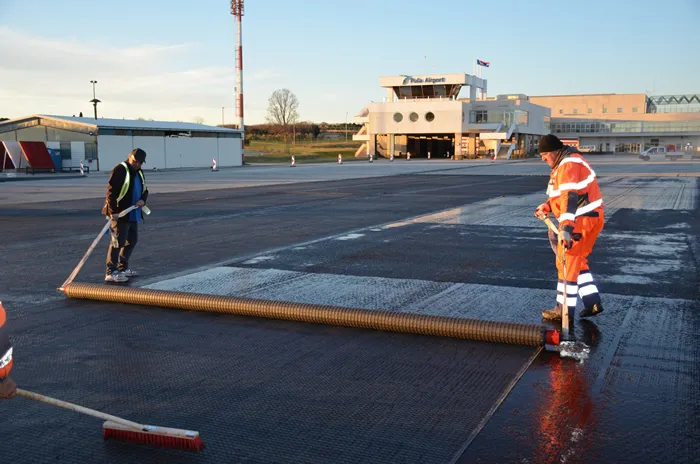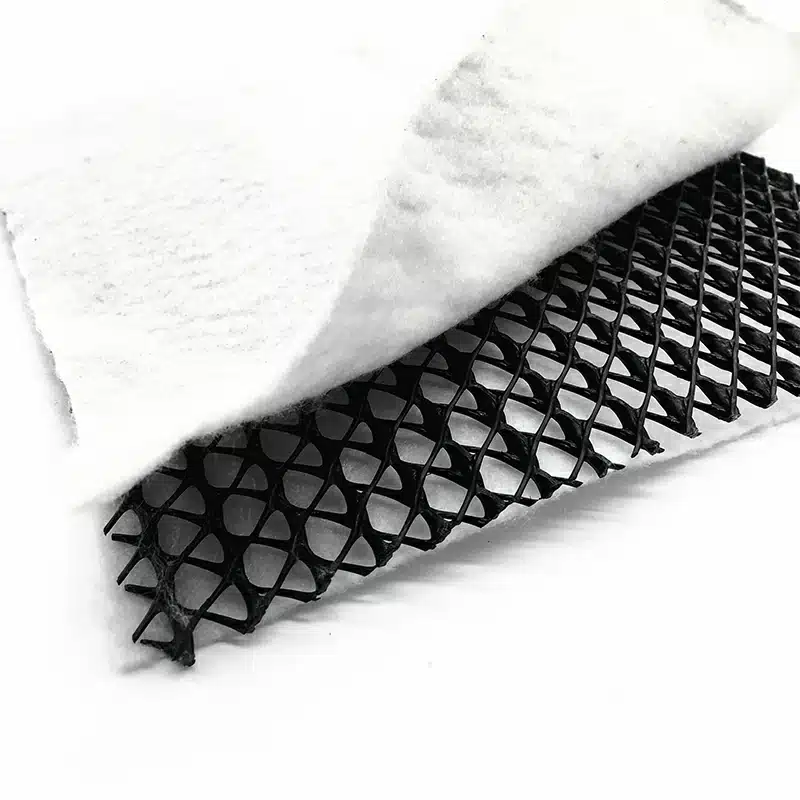+86-159 9860 6917
info@geofantex.com
geofantex@gmail.com
+86-400-8266163-44899
Geocomposites have revolutionized various industries, and one such innovative variation is the development of geocomposites. In this article, we’ll explore the different types of geocomposites, delve into the purpose they serve, and uncover the advantages they bring to the table.

What are the different types of geocomposites?
Geocomposites are specially engineered materials that combine various geosynthetic components, serving different purposes in construction:
- Drainage Geocomposites: These combine geotextiles and geonets, providing excellent filtration and drainage. They are ideal for erosion control and landfill liner systems.
- Reinforcement Geocomposites: Blending geogrids with geotextiles, these geocomposites offer both reinforcement and filtration properties. They are commonly used in road construction, retaining walls, and embankments.
- Fluid Barrier Geocomposites: By pairing geocells with geotextiles, these geocomposites excel in soil confinement and stabilization. They find applications in load support for pavements and preventing soil erosion on slopes.
- Fluid Barrier Geocomposites: Geomembranes and geotextiles are combined to create impermeable barriers. These geocomposites are essential in environmental protection and containment systems, such as landfill liners and pond liners.
What is the purpose of geocomposites?
Geocomposites play diverse roles in various industries, offering these essential functions:
- Reinforcement: They enhance soil stability and load-bearing capacity, crucial in projects like road construction and retaining walls.
- Drainage: Geocomposites ensure proper water drainage, preventing waterlogging and improving soil health.
- Filtration: Acting as filters, they block fine soil particles while allowing water to flow through, vital for erosion control and infrastructure durability.
- Separation: Geocomposites create a barrier to isolate different soil layers or materials, preventing contamination and unwanted interactions.
- Erosion Control: Used to halt soil erosion on slopes, riverbanks, and coastal areas, preserving natural landscapes and infrastructure.

What are the advantages of geocomposites?
Geocomposites offer numerous advantages that have made them a preferred choice in various applications:
- Improved Durability: Geocomposites enhance the lifespan and durability of structures and landscapes, reducing maintenance costs.
- Cost-Effectiveness: They often require less material and labor compared to traditional methods, leading to cost savings.
- Environmental Sustainability: Geocomposites can help reduce the environmental impact of construction and infrastructure projects by preventing erosion and soil contamination.
- Versatility: Geocomposites can be tailored to specific project requirements, making them suitable for a wide range of applications.
- Efficient Installation: They are relatively easy to install, saving time and labor.
How do geocomposites contribute to sustainable development?
Geocomposites play a crucial role in sustainable development in several ways:
- Reduced Environmental Impact: By containing hazardous materials and preventing contamination, geocomposites protect ecosystems and water resources.
- Resource Efficiency: Geocomposites extend the lifespan of infrastructure, reducing the need for frequent repairs or replacements and conserving resources.
- Erosion Control: They prevent soil erosion, preserving the natural landscape and reducing the need for costly rehabilitation efforts.
- Improved Infrastructure Performance: Geocomposites enhance the reliability and stability of infrastructure, making it resilient to climate change and extreme weather events.
innovation with a broad range of applications. They come in various types, each designed to meet specific project requirements. Their purposes encompass reinforcement, drainage, filtration, isolation, and erosion control. The advantages of geocomposites include cost-effectiveness, environmental sustainability, versatility, and efficient installation. By incorporating geocomposites into construction and environmental projects, we can enhance the efficiency and sustainability of various industries.



Get Free Sample
We’ll respond as soon as possible(within 12 hours)






















